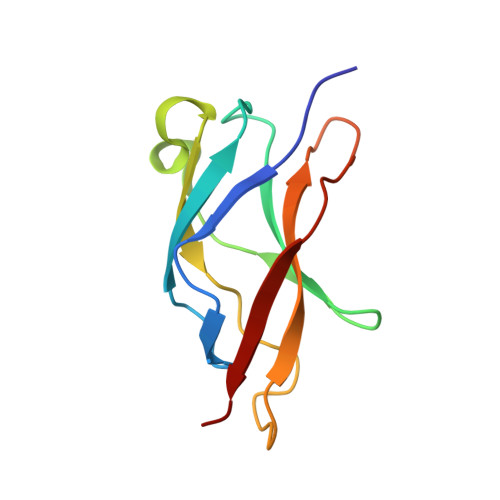A structural basis for selective dimerization by NF-kappa B RelB.
Vu, D., Huang, D.B., Vemu, A., Ghosh, G.(2013) J Mol Biol 425: 1934-1945
- PubMed: 23485337
- DOI: https://doi.org/10.1016/j.jmb.2013.02.020
- Primary Citation of Related Structures:
3JSS, 3JV4, 3JV6, 4JGM - PubMed Abstract:
Transcription factors of the nuclear factor kappaB (NF-κB) family arise through the combinatorial association of five distinct Rel subunits into functional dimers. However, not every dimer combination is observed in cells. The RelB subunit, for example, does not appear as a homodimer and forms heterodimers exclusively in combination with p50 or p52 subunits. We previously reported that the RelB homodimer could be forced to assemble through domain swapping in vitro. In order to understand the mechanism of selective dimerization among Rel subunits, we have determined the x-ray crystal structures of five RelB dimers. We find that RelB forms canonical side-by-side heterodimers with p50 and p52. We observe that, although mutation of four surface hydrophobic residues that are unique to RelB does not affect its propensity to form homodimers via domain swapping, alteration of two interfacial residues converts RelB to a side-by-side homodimer. Surprisingly, these mutant RelB homodimers remain distinct from canonical side-by-side NF-κB dimers in that the two monomers move away from one another along the 2-fold axis to avoid non-complementary interactions at the interface. The presence of distinct residues buried within the hydrophobic core of the RelB dimerization domain appears to influence the conformations of the surface residues that mediate the dimer interface. This conclusion is consistent with prior observations that alterations of domain core residues change dimerization propensity in the NF-κB family transcription factors. We suggest that RelB has evolved into a specialized NF-κB subunit with unique amino acids optimized for selective formation of heterodimers with p50 and p52.
Organizational Affiliation:
Department of Chemistry and Biochemistry, University of California, San Diego, 9500 Gilman Drive, La Jolla, CA 92093-0375, USA.
















